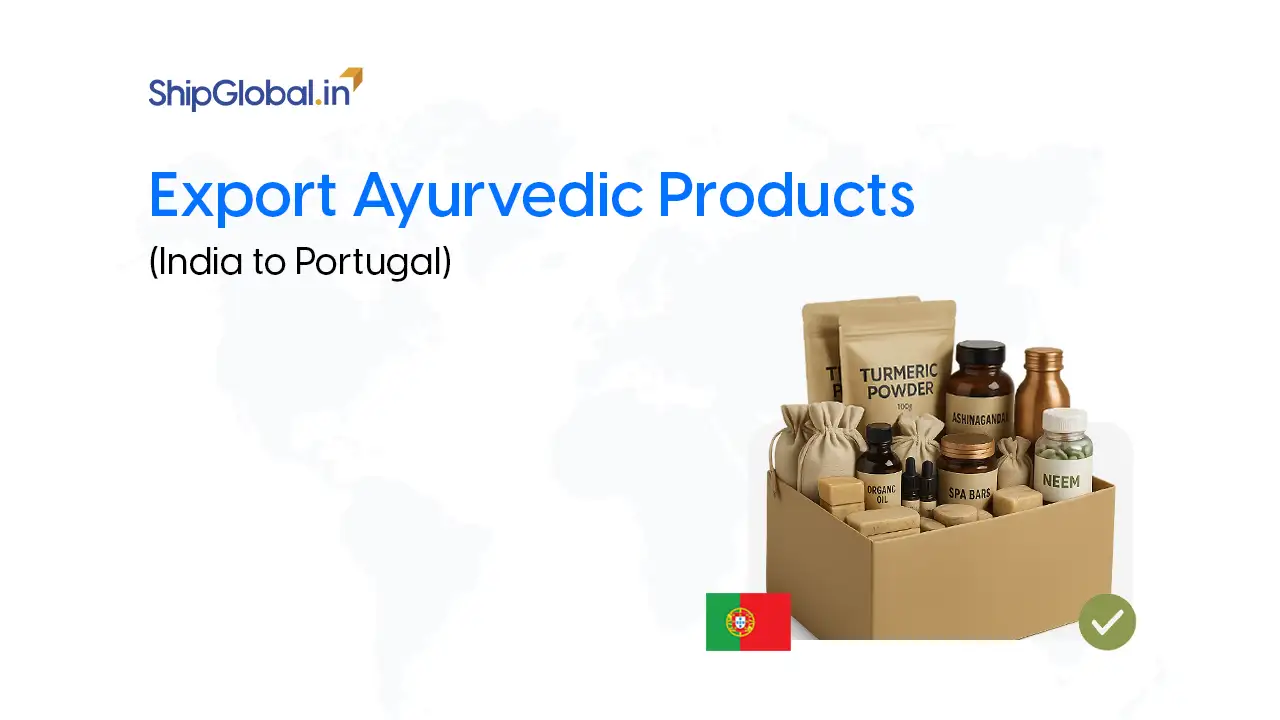Walk into a bustling Indian craft market, whether in Rajasthan, Uttar Pradesh, or Gujarat, and you’ll immediately feel surrounded by history, artistry, and stories carved into every object. From carved wooden décor and embroidered textiles to brass metalware, these crafts are more than just products; they are living traditions. Today, the journey of these treasures doesn’t stop at Indian bazaars. Demand for handicrafts from India to Germany is steadily rising, making Europe one of the most promising markets for Indian artisans and exporters.
Now picture these same treasures in a chic German living room in Berlin, in the window of a boutique in Hamburg, or as a centerpiece in a Munich department store. The demand for handicrafts from India to Germany has grown steadily, driven by German consumers’ love for authentic, sustainable, and ethically made home décor. Indian artisans and exporters have a unique opportunity to connect tradition with modern European lifestyles.
But how do you actually get from your workshop in Saharanpur, Moradabad, or Jaipur to the shelves of German buyers? That’s where this guide comes in. We’ll go step by step through the entire export journey of wooden, textile, and metal handicrafts from India to Germany covering compliance, logistics, market strategies, and much more.
Why Germany Loves Handicrafts from India to Germany
Germany is Europe’s largest economy and a major hub for trade, design, and retail. Its consumers are known for being practical, design-savvy, and increasingly eco-conscious. That’s why Indian handicrafts which combine authenticity with sustainability are so attractive here.
- German Home Decor Imports from India: According to trade reports, Germany imports a significant share of its home decor and lifestyle products from India, especially wooden furniture, textile decor, and decorative metalware.
- Sustainable Artisan Products in German Retail: Consumers in Germany are moving away from mass-produced, machine-made goods and toward ethical handicraft sourcing from India to Europe. Products with a story, fair-trade values, and eco-friendly production processes have a competitive edge.
- Authentic Handmade Décor for German Market: From hand-carved wooden trays to embroidered wall hangings, Indian handicrafts offer exactly the type of authenticity German buyers seek.
Think of the growing popularity of artisanal brands in Germany: they often feature fair trade products, sustainable textiles, and global handmade collections. Indian exporters can seamlessly fit into this demand.
Step 1: Regulatory Compliance for Handicrafts from India to Germany
Exporting might feel like a mountain of paperwork at first, but each document plays a crucial role. If you want your shipment to clear customs smoothly, you need to get this right from day one.
Indian Export Rules for Handicrafts from India to Germany
- IEC Code for Handicraft Export from India: Without this Import Export Code issued by DGFT, you simply cannot ship internationally.
- EPCH RCMC Registration for Handicrafts: By registering with the Export Promotion Council for Handicrafts, you gain recognition and can participate in international trade fairs organized by EPCH.
- DGFT Foreign Trade Policy Handicrafts: India’s export policies evolve, often introducing schemes like MEIS or RoDTEP. Both reduce your costs by refunding duties and taxes paid during production and shipping.
- HS Codes for Wood, Textile, and Metal Crafts: Each type of handicraft needs an HS (Harmonized System) classification code for customs. For example, wooden handicrafts fall under a different HS code than embroidered textiles.
EU Documentation for Handicrafts from India to Germany
- Export Certificate of Origin – Made in India: This certificate assures buyers that the handicrafts are genuinely Indian. Sometimes it also allows for preferential tariffs.
- EORI Germany Imports Handicrafts: Your German buyer must have an EORI (Economic Operator Registration and Identification) number, without which customs clearance won’t proceed.
- SAD Form EU Customs Documentation: The Single Administrative Document is mandatory for goods entering the EU.
Pro Tip: Work with a reliable freight forwarder or CHA (Customs House Agent). They handle these formalities daily and can help avoid delays that new exporters often face.
Step 2: Logistics and Packaging for Handicrafts from India to Germany
Imagine a beautifully carved wooden wall hanging arriving in Berlin, only to be cracked in half. Or embroidered textiles arriving with mold stains. Poor packaging and wrong shipping choices can undo all your hard work. That’s why logistics and packaging deserve as much attention as the craft itself.
Packaging Best Practices for Handicrafts from India to Germany
- Fragile Packaging for Export Crafts: Always double-box fragile items. Use bubble wrap, corrugated sheets, and foam inserts.
- For textiles, moisture-proof packaging is essential. Add silica gel packs to absorb humidity during sea transport.
- Clearly label “Fragile – Handle with Care” in both English and German.
Choosing the Right Shipping Method
- Air Freight vs Sea Freight for Handicrafts: Air freight is faster, ideal for small orders or samples. Sea freight is cost-effective for bulk shipments but takes longer.
- Shipping Consolidation for Handicrafts: If your order size is small, consolidation allows you to share container space, saving costs.
- INCOTERMS (FOB, DAP, DDP): Decide with your buyer who will bear costs and risks at each stage. For beginners, DAP or DDP often makes life easier as the buyer handles less of the logistics.
- Customs Clearance India–Germany Handicrafts: A reliable customs broker is your best friend here.
Logistics Companies to Consider
Several international and India-focused logistics companies specialize in handling fragile exports like handicrafts. Partnering with the right one can mean the difference between seamless deliveries and constant delays. Some trusted names include:
- DHL Express – Excellent for smaller, high-value consignments going by air freight.
- FedEx – Strong in international courier shipments and express services.
- UPS – Reliable global coverage, especially for Europe.
- Blue Dart – Useful for domestic movement and consolidations before international shipping.
- ShipGlobal – A rising name for cost-optimized handicraft shipping. ShipGlobal focuses on helping Indian exporters reach international markets efficiently, providing tailored solutions for fragile products like wooden, textile, and metal crafts.
Cost optimization is key. Compare quotes from these companies, ask about consolidation options, and negotiate long-term contracts if you plan to export regularly.
Cost optimization is key. Compare freight forwarders, negotiate, and plan shipments in advance to save significantly.
Step 3: Building Your Export Business in India
Behind every successful export business is a strong foundation at home.
- Company Incorporation for Export Business: Register your business as a Private Limited Company, Partnership, or Proprietorship. Each has tax and compliance implications.
- MSME Handicraft Exporter Incentives: If you qualify as an MSME, you get easier loans, subsidies, and government support.
- Trademark Registration for Export Crafts: Protect your brand internationally, especially if you’re selling online or building a label for the German market.
- Finance Support for Artisans Handicraft Exports: Several banks and government schemes offer pre-shipment finance and post-shipment credit. Don’t overlook these cash flow can be tight when you’re exporting.
By formalizing your business, you not only look professional to German buyers but also qualify for government incentives that improve profitability.
Step 4: Entering the German Market
Now comes the most exciting part: actually selling to Germany. This is where your strategy decides whether you stay a small exporter or scale into a global business.
B2B Wholesale and Trade Fairs
- Germany hosts some of the world’s biggest fairs like Ambiente (Frankfurt), Heimtextil, and Tendence. These events attract thousands of retailers, wholesalers, and distributors.
- Participation through EPCH often comes with subsidies for Indian exporters.
- Trade fairs also allow you to showcase new designs, meet buyers face-to-face, and negotiate large orders.
B2C Online Platforms
- Platforms like Etsy, Amazon Handmade, and Shopify make it possible to sell directly to German consumers.
- Storytelling is key. Don’t just list “embroidered cushion.” Instead, describe it as “a hand-embroidered cushion crafted by women artisans in Rajasthan, made with sustainable cotton.” German consumers pay for stories as much as for products.
Positioning Your Products for Success
- Highlight sustainability and fair trade values. Germans are more likely to choose your product if they know artisans are paid fairly.
- Comply with EU textile labeling laws. Textile imports must clearly list fiber content, care instructions, and country of origin.
- Promote authentic handmade décor for the German market. Use your regional roots as a selling point, Saharanpur wood, Moradabad brass, Rajasthan embroidery, or Gujarat block prints all carry cultural weight.
Step 5: Regional Strengths – Selling India’s Diversity
When exporting, your regional identity is your strength. German buyers don’t just want “handicrafts” they want a story tied to a place.
- Saharanpur Wooden Crafts Exporters: Known worldwide for hand-carved furniture and panels.
- Moradabad Brass Metal Ware Export: “Peetal Nagri” produces everything from lamps to decorative trays.
- Rajasthan Embroidered Textiles Export Germany: Mirror work, embroidery, and bold designs that fit Germany’s love for colorful, artisanal textiles.
- Gujarat Block-Print Textile India Export: Eco-friendly, sustainable fabrics made with natural dyes.
- UP Carved Wood Handicrafts India: Fine woodwork perfect for home décor and furniture.
These unique regional strengths give character to handicrafts from India to Germany.
Wrapping Up: The Road Ahead
Exporting handicrafts from India to Germany is not just about business; it’s about cultural exchange. With growing demand for sustainable, artisan-made goods, Indian exporters have a chance to make a global impact
Yes, the process involves effort securing IEC codes, EPCH registration, HS codes, EORI numbers, SAD forms, and navigating logistics. But once you master compliance, the possibilities are endless.
With smart packaging, cost-effective shipping, and strong marketing whether through trade fairs, B2B wholesale, or online platforms you can create a brand that resonates in Germany. And every handcrafted item that makes its way into a German home becomes a silent ambassador of India’s cultural richness.
The journey from Indian workshops to German marketplaces is not always simple, but it is rewarding. Done right, it’s a win for artisans, exporters, and global buyers alike.
FAQs
Wooden furniture and décor from Saharanpur, brass and metalware from Moradabad, embroidered textiles from Rajasthan, and block-printed fabrics from Gujarat are in high demand.
Yes, the Importer Exporter Code (IEC) from DGFT is mandatory for all exports from India.
Fragile packaging is essential. Use bubble wrap, corrugated sheets, foam inserts, and moisture-proof materials for textiles.
DHL, FedEx, UPS, Maersk, Blue Dart, and ShipGlobal are commonly used by exporters. ShipGlobal offers tailored solutions for fragile handicrafts.
You can use platforms like Etsy, Amazon Handmade, or Shopify. Branding and storytelling are key to attracting German buyers.
Yes, schemes like MEIS and RoDTEP provide financial benefits. MSMEs also get access to subsidies and export finance support.








